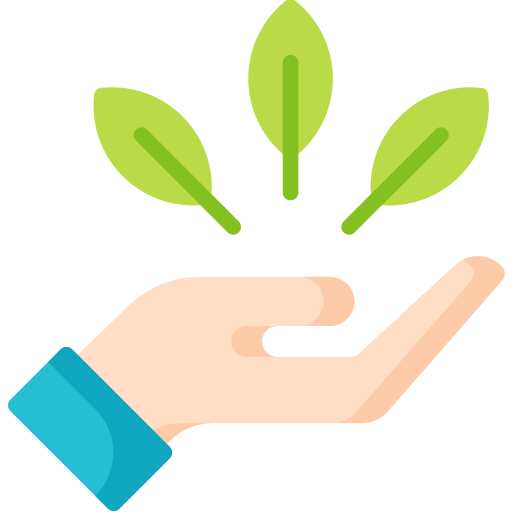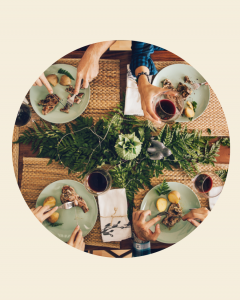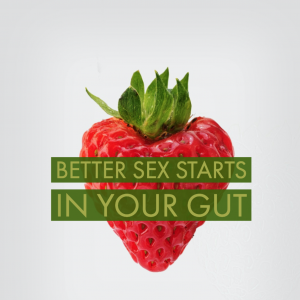It’s estimated that millions of Americans have gallstones. Studies have shown that women are twice as likely as men to form cholesterol gallstones. This gender difference begins in puberty and continues through the childbearing years, highlighting the importance of female sex hormones. Pregnancy, birth control pills, and the natural fluctuations of the menstrual cycle can cause a slowing down of the contractions of the gallbladder, causing bile to sit longer than usual.
A significant number of studies have proposed that estrogen, in particular, increases the risk of developing cholesterol gallstones by increasing the hepatic secretion of biliary cholesterol, leading to an increase in cholesterol saturation of bile. For example, birth control or hormone replacement therapy for menopause symptoms can raise estrogen and cholesterol.
The Gallbladder:
What are Gallbladder stones? They’re tiny, hardened bits of cholesterol. They could be as small as a grain of sand or as large as a golf ball. Bile, produced by the liver, has the critical function of helping digest fats, which the gallbladder stores for digestion.
Symptoms of gall bladder dysfunction may include:
- Sudden onset pain underneath your right ribcage, occasionally associated with heartburn, nausea, gas, and fullness
- Pain between the shoulder blades
- A chronic abdominal ache that intensifies after eating
- Pale, greasy, floating stools and dark amber-colored urine
Hormones are vital for gallbladder function:
Estrogen and Progesterone: Research has shown that pregnancy, oral contraceptives and hormone replacement therapy may contribute to the formation of gallstones. The reason is that estrogen and progesterone can both slow the emptying and increase the cholesterol-to-bile ratio, leading to supersaturation of bile and more sludge. Bile is essential for the elimination of estrogen and its metabolites through the liver. When not adequately metabolized, it leads to sluggish hormone elimination resulting in the often life-disrupting symptoms of unbalanced hormones, such as cramping, breast tenderness, water retention, and acne, to name a few.
Melatonin (sleep hormone) regulates the sleep cycle in response to darkness while also preventing gallstones by reducing cholesterol levels in the bile and improving cholesterol conversion into bile salts. In addition, it aids gallbladder contraction by strengthening the neuromuscular junction of the gallbladder walls.
Thyroxine (T4), is also known as the inactive thyroid hormone. Research has shown that women with thyroid disorders have a higher incidence of gallbladder dysfunction. This is because low thyroxine levels lead to the under-functioning of bile acid flow, directly affecting the gallbladder. A compromised bile output leads to decreased lipid metabolism, which increases the likelihood of gallbladder stone formation.
Cortisol causes the liver to release glucose, providing the needed energy in times of stress or hypoglycemia. Blockages in bile flow are associated with states of dysfunctional communication between the hypothalamus, pituitary, adrenals, and proper gallbladder function.
THE AGE AND WEIGHT FACTORS:
Women over the age of 40 are the most likely to experience gallstones. But there are some steps to reduce the risk of developing them:
A heart-healthy diet is a gallbladder-healthy diet. If you have been diagnosed with gallbladder disease, gallstones, or just want to minimize your risk of developing gallbladder disease, sticking to a diet low in saturated fats and high in mono- and polyunsaturated fats is the way to go.
Eating less often throughout the day can actually lead to gallstones. Since the gallbladder stores bile during fasting states, it becomes super concentrated — along with the cholesterol contained in bile. Gallstones are generally crystallized bits of cholesterol. By eating more frequently throughout the day, your gallbladder has to secrete bile to help digest your food — and flush out stored cholesterol.
- Heart-healthy nuts like almonds, brazil nuts, or cashews
- Avocados & small portions off fatty fish like salmon, tuna, or sardines
- Flaxseeds
- Fresh fruits and vegetables
- Foods rich in fiber, such as broccoli, lentils, and legumes
WEIGHT LOSS:
Overweight women are at a higher risk of developing gallstones. Maintaining a healthy weight can is crucial to prevent developing gall bladder stones. But rapid weight loss can actually increase the risk of gallstones. While it may be tempting to quickly get rid of extra weight, stick to losing one-to-two pounds a week to avoid developing gallstones. So, avoid any crash diets. A healthy pace for weight loss is about 1-2 pounds a week.
OLIVE OIL VS MARGARINE
Because gallstones are caused by cholesterol hardening inside the gallbladder, some foods full of saturated fat could lead to gallstones. These foods can raise your cholesterol… and the more you have, the more likely it will lead to gallstones. But there are some easy swaps you can make. Instead of cooking with margarine, which is heavy in saturated fat, try olive oil. It’s full of unsaturated fats and omega-3 fatty acids —“healthy” fats.
CHOCOLATE
When I do indulge in sweets, I aim for dark chocolate for several reasons. It’s an antioxidant, which is great for your skin. And some dark chocolates also include lecithin, which is an emulsifier. That means it is used to blend fat and water. Some experts claim that lecithin can bind to the “fat” or cholesterol and help to flush it out of the gallbladder.
TURMERIC TEA
Turmeric tea is a wonderful tool for your overall health, including gallstones. Curcumin — the ingredient that makes turmeric “golden” — stimulates the gallbladder and bile flow… meaning your gallbladder will keep working to flush cholesterol and other fats out of your body. It’s also a great anti-inflammatory and can reduce joint stiffness as well as digestive discomfort.
EXERCISE
Exercising frequently helps keep your digestive system going. This includes the gallbladder moving excess cholesterol out of your body. One easy way to get enough exercise is to take a walk each day. I like to take a stroll around the neighborhood after dinner — it helps digest the day’s food, and it’s an excellent way to spend time with loved ones after a hectic day. 20–30 minutes should be enough to ensure your gallbladder feels the effects.
BIRTH CONTROL
If you’re currently on hormonal birth control and are experiencing pain, indigestion, burping, gas, nausea, and/or bloating, discuss with your doctor or naturopath if these symptoms may be a result of your contraception method.
WHAT ELSE?
Getting plenty of natural fibers (from fruits and veggies) is an essential part of a gallbladder-friendly diet. Some of my favorites are okra, beets, cucumber, lemon, and watermelon. Some herbs and spices are also valuable for combatting gallstones. (I recommend turmeric, dandelion, or peppermint). And make sure you are getting enough calcium, vitamin C, and omega-3!
And… avoid unhealthy habits like smoking. In addition to increasing your risk of cancer, tobacco also worsens the symptoms of gallstones… and makes it harder to dissolve them.
Sources:
- Mohammadi-Sartang, Mohsen, Mohammad Ghorbani, and ZohrehMazloom. “Effects of melatonin supplementation on blood lipid concentrations: A systematic review and meta-analysis of randomized controlled trials.” Clinical Nutrition 37.6 (2018): 1943-1954.




